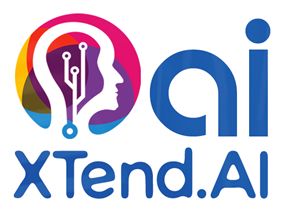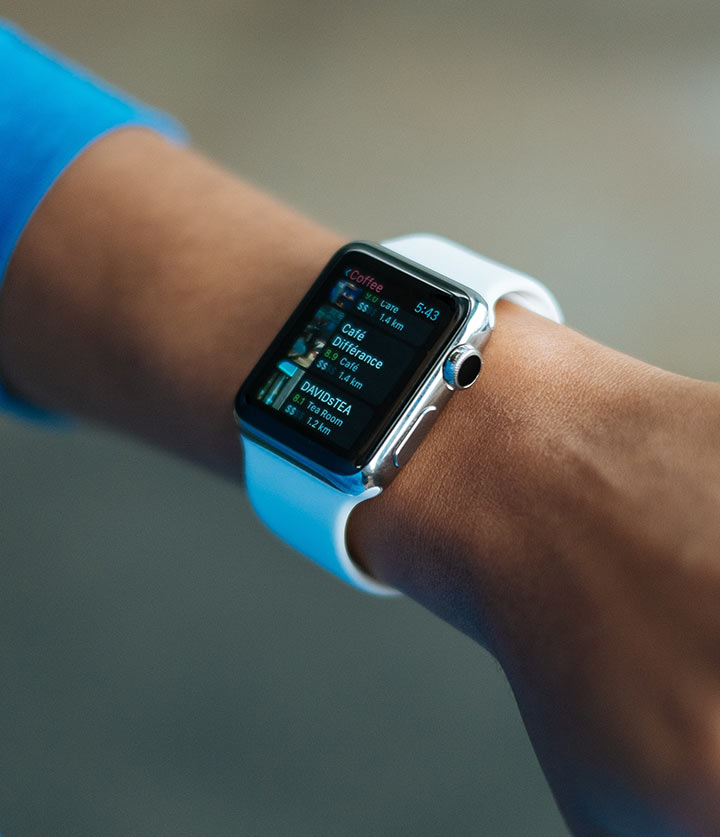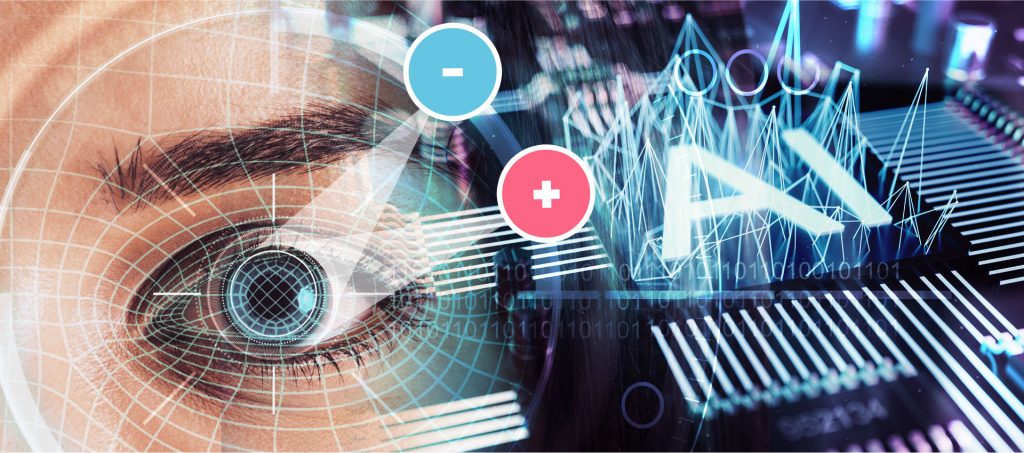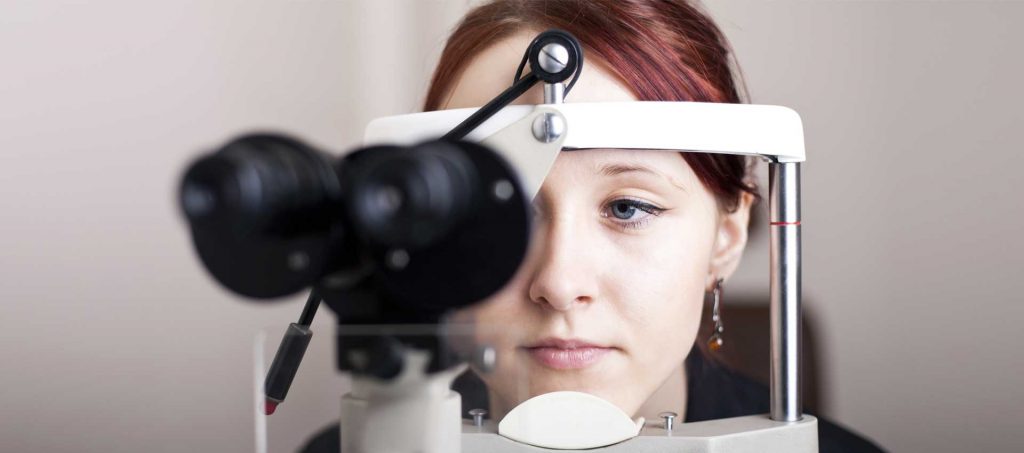A Global Healthcare Challenge:
Diabetic retinopathy (DR) is a serious eye disease caused by diabetes that can lead to impaired vision and blindness. As per WHO, the number of people with diabetes worldwide has nearly quadrupled, from 108 million in 1980 to over 422 million people today, and it is predicted to affect over 640 million people by 2040.
Studies suggest that 35% of people with diabetes, or 148 million people globally have some form of DR. And an estimated 10% or 42 million have vision-threatening DR (VTDR), making it one of the leading causes of blindness worldwide.
The risk of vision loss can be greatly minimized if DR is detected and treated early enough. Early detection of DR requires periodic eye examinations and screenings by a trained ophthalmologist or an eye-care professional. However, many developing and low-income countries do not have the necessary specialists, resources or infrastructure to do so effectively.
However, as the chart below from the International Council of Ophthalmology shows, there are not enough trained eye doctors in many parts of the world to screen everyone at risk. In India, for example, there are over 72 million people with diabetes and an estimated 25 million are afflicted with DR and 7 million with VTDR. However, India only has 15,000 trained ophthalmologists in a nation of 1.3 billion people – or a mere 9 specialists per a million people. Kenya, with a population of 48 million has less than 100 ophthalmologists, and Angola, less than 20 for 29 million people. In addition to the dire shortage of trained professionals, many of the affected people live in remote areas with little or no access to an eye care clinic or a screening center.
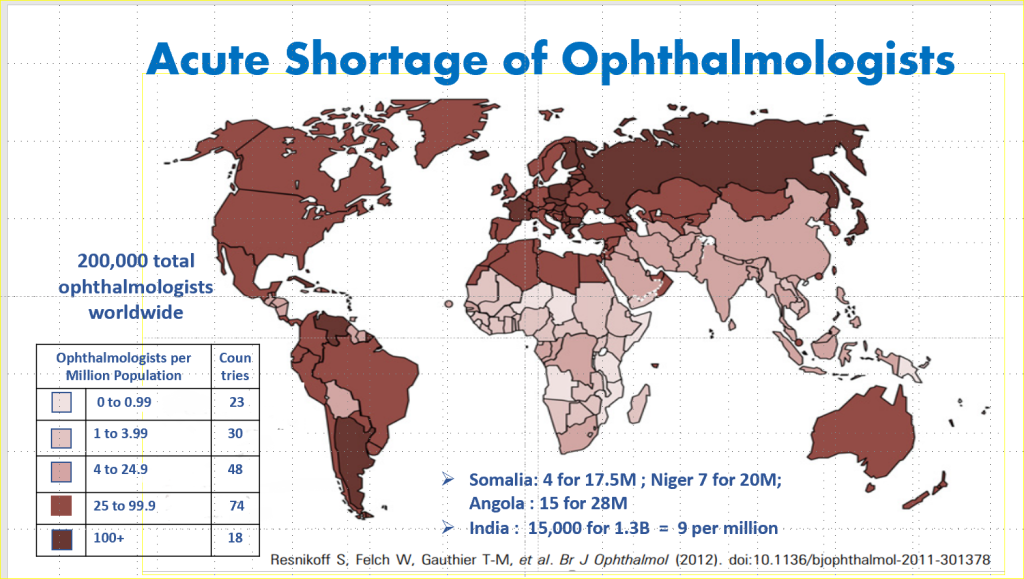
Diabetic Retinopathy is clearly a global health care challenge that urgently needs innovative solutions in order to prevent vision loss among millions of people at risk worldwide. Recent advances in Artificial Intelligence can be harnessed to address this challenge.
How AI Can Help:
Detection and diagnosing Diabetic Retinopathy (DR) requires capturing an image of the the retina using specialized equipment such as a slit-lamp and fundus camera. The image is then examined by an ophthalmologist, optometrist or a trained professional to detect abnormalities such as microaneurysms, exudates, hemorrhages, macular edema, etc. to determine if DR is present and its severity and stage of progression. In general DR can be classified as mild, moderate or vision-threatening, which includes severe non-proliferative DR, proliferative DR (PDR) and diabetic macular edema (DME). Accurate diagnosis of DR from fundus camera images and grading its severity requires professional expertise and training.
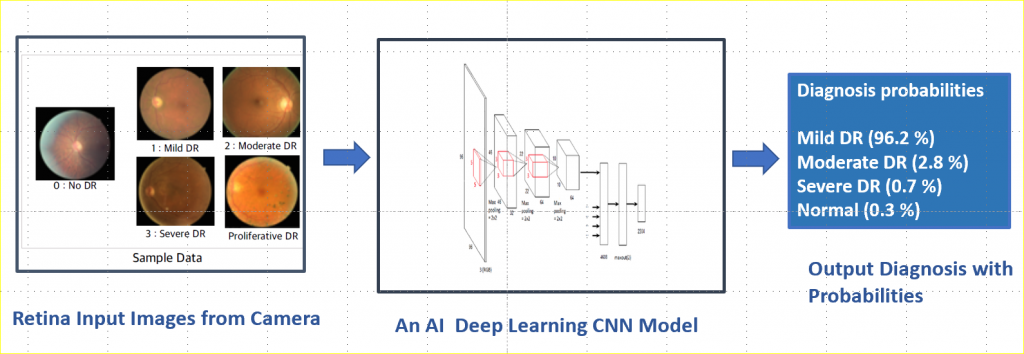
In recent years, many AI systems using deep learning have been very successful in image recognition and classification tasks. For example, in the Imagenet challenge, requiring identification of objects in a 1000 categories, the best models achieve a classification error rate of less than 5%. – exceeding the best human accuracy levels.
Many of these models, have now been adapted successfully for use in a variety of medical image diagnosis tasks such as melanoma, breast, lung cancer detection and diabetic retinopathy.
An integrated system using AI can be deployed at scale and be effective for early detection and screening of DR, a major cause of preventable blindness worldwide.
AI based systems for detection of DR offer the following potential benefits:
● Bridge the shortage of healthcare professionals and provide access to screening where none exists.
● Increase overall efficiency and scalability of current screening methods.
● Provide earlier detection of DR thereby preventing vision loss for millions.
● Decrease overall health-care costs via earlier interventions when it is easier and less expensive to treat these diseases.
